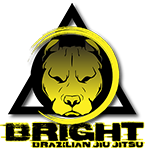Judo is an unarmed modern Japanese martial art, combat sport, Olympic sport (since 1964), and the most prominent form of jacket wrestling competed internationally. Judo was created in 1882 by Kanō Jigorō as an eclectic martial art, distinguishing itself from its predecessors (primarily Tenjin Shinyo-ryu jujutsu and Kitō-ryū jujutsu) due to an emphasis on “randori“, lit. ‘free sparring’) instead of “kata” (pre-arranged forms) alongside its removal of striking and weapon training elements. Judo rose to prominence for its dominance over established jujutsu schools in tournaments hosted by the Tokyo Metropolitan Police Department, resulting in its adoption as the department’s primary martial art. A judo practitioner is called a “judoka”, and the judo uniform is called “judogi”.
The objective of competitive judo is to throw an opponent, immobilize them with a pin, or force an opponent to submit with a joint lock or a choke. While strikes and use of weapons are included in some pre-arranged forms (kata), they are not frequently trained and are illegal in judo competition or free practice. Judo’s international governing body is the International Judo Federation, and competitors compete in the international IJF professional circuit.
Judo’s philosophy revolves around two primary principles: “Seiryoku-Zenyo” and “Jita-Kyoei”. The philosophy and subsequent pedagogy developed for judo became the model for other modern Japanese martial arts that developed from koryū. Judo also spawned a number of derivative martial arts around the world, such as Brazilian jiu-jitsu, Krav Maga, sambo, and ARB. Judo also influenced other combat styles such as close-quarters combat (CQC), mixed martial arts (MMA), shoot wrestling and submission wrestling.
*Description taken from Wikipedia


